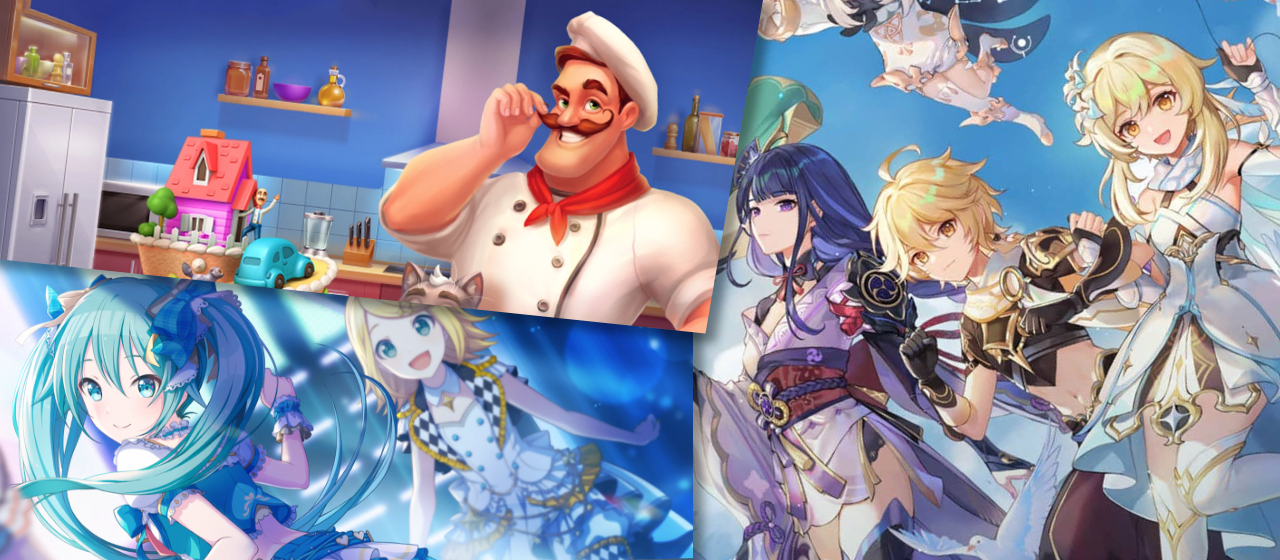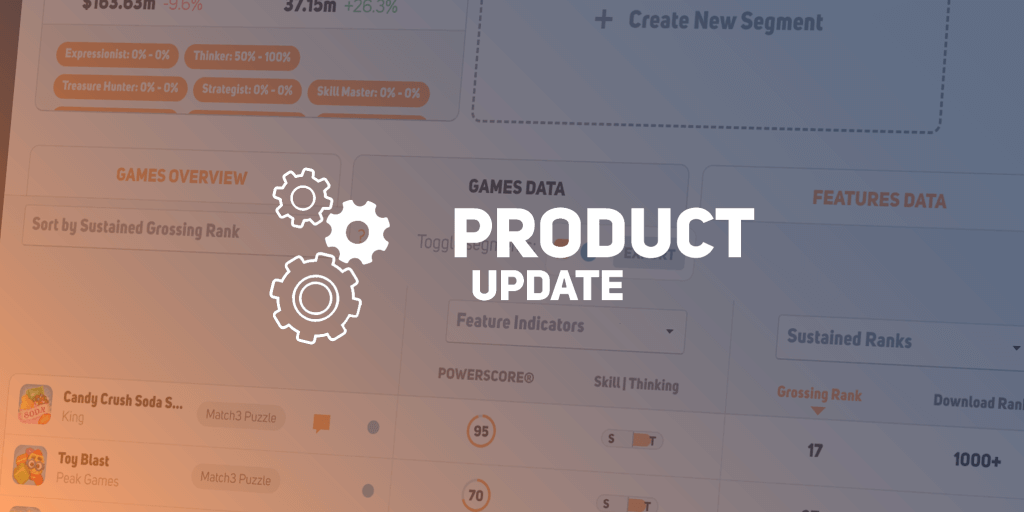How to make sure a new player feels welcome, knows what to do and in what order, has the means and resources to do it, and gets hooked while doing it? A fitting, well-balanced player onboarding is essential for seizing a new player’s attention and the will to engage after the tutorial phase.
In this blog post series, we will take a look at the best practices of player onboarding among the top-grossing iOS games across different genres and markets. In the first post of three, we will focus on storytelling elements and tutorial mechanics and how they can be implemented so that they support player immersion and a sense of progress from the get-go. The second post will offer insights on how to secure the retention of new players, and the third one illustrates how to design monetization that appeals to a new player and supports the early progression and engagement.
Story & Background – Inviting Emotional Engagement While Setting the Scene
As illustrated at length in our earlier blog posts on why stories matter, the power of storytelling in the casual market, and this interesting deconstruction of unique storytelling elements in the RPG scene, storytelling is undoubtedly a powerful tool for creating emotional engagement, which in turn keeps the player coming back and investing in the thing she has a real connection with. The seeds of emotional engagement should preferably be planted right from the get-go and nurtured throughout the early stages of the game to benefit from their power properly. Starting the game with an immersing opening trailer, introducing the background story behind the game’s setting, enhancing the tutorial with characters narrating events, and weaving the player’s tasks inside the story will help immerse the player and nurture a stickier relationship with the game.
Now, let’s look at some examples of games that excel in utilizing storytelling elements in their onboarding plan.
There are many factors that still make Genshin Impact stand out as an exceptionally well-made mobile game, and for the benefit of this case, it offers an excellent example of how to introduce the world of the game to the player. Genshin Impact manages a seamlessly fluctuating transition between high-quality cutscenes, tutorial elements, and gameplay, gently guiding the player with the mechanics without disturbing the immersion in the world and the story.
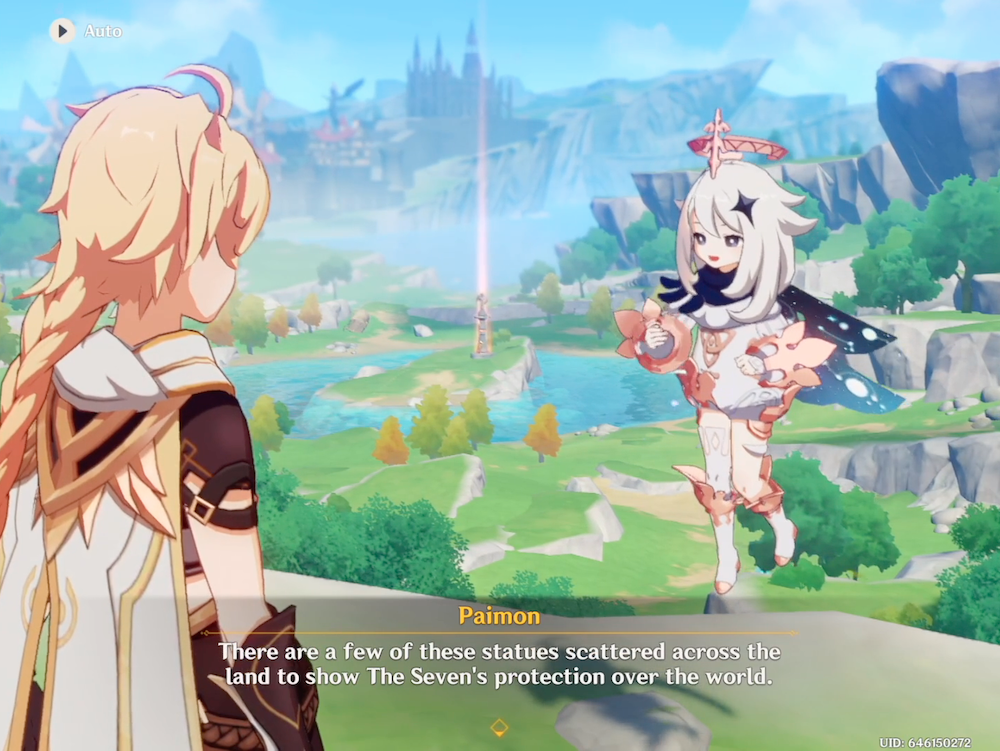
A lot of beautiful examples of all-around story-driven games could be found in the Japanese market, but this time we chose to look at something other than an obvious turn-based RPG game. Project Sekai Colorful Stage feat. Hatsune Miku is a deeply character and story-driven rhythm game that starts with cutscenes accompanied by some direct dialogue between the player and the iconic vocaloid, Hatsune Miku. What immediately gives agency and ownership of the story to the player is the dialogue choices she gets to make while delving into the mysteries of Project Sekai for the first time.
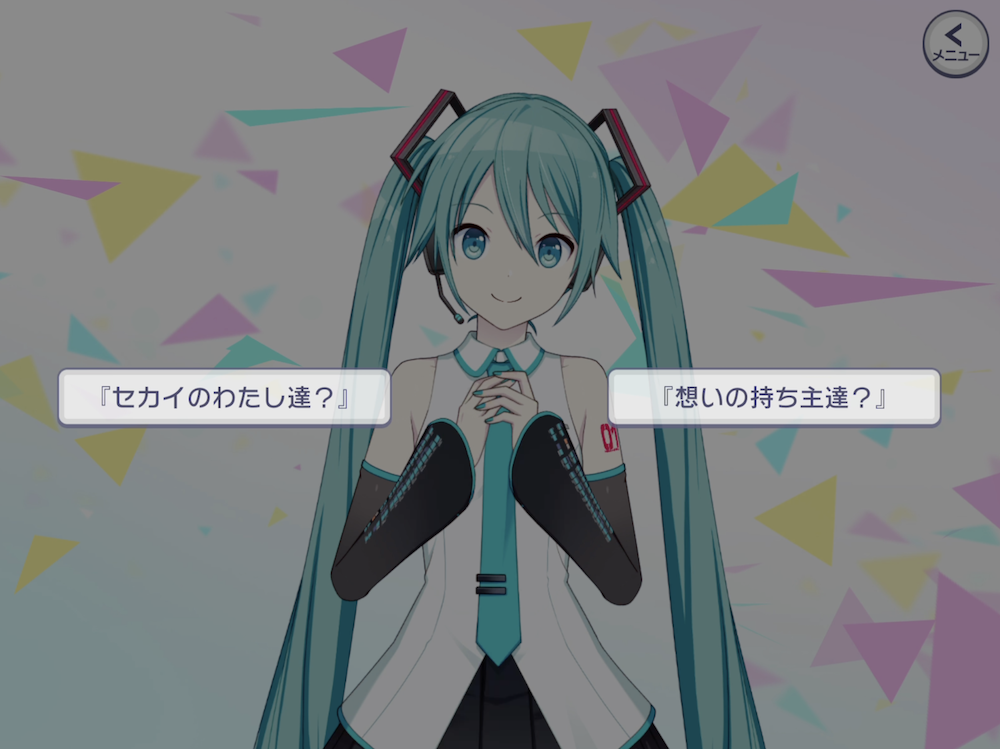
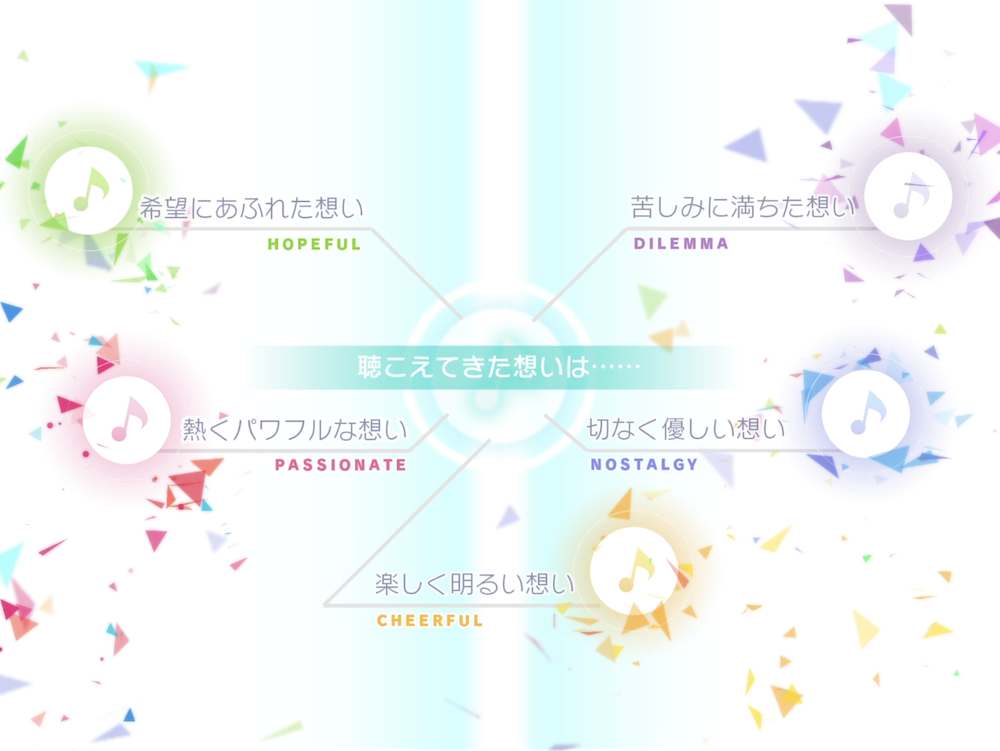
Apart from the obvious story-driven RPG titles, casual subgenres can also benefit from storytelling elements, as we have seen for some time already. In Homescapes, as well as many other puzzle games with renovation meta, advancing the story is an essential part of the whole progression and tightly intertwined with the motivation to complete tasks. The background with the main character returning to his parent’s dusty house, as well as the motivation for renovation and redecorating, is intricately explained through the game engine 3D animated scenarios and dialogue between the characters. The necessary renovation actions for advancing in the story require points, and the player is pointed to the core loop to collect them, tying the puzzle board core neatly to the renovation actions and the story right from the start.
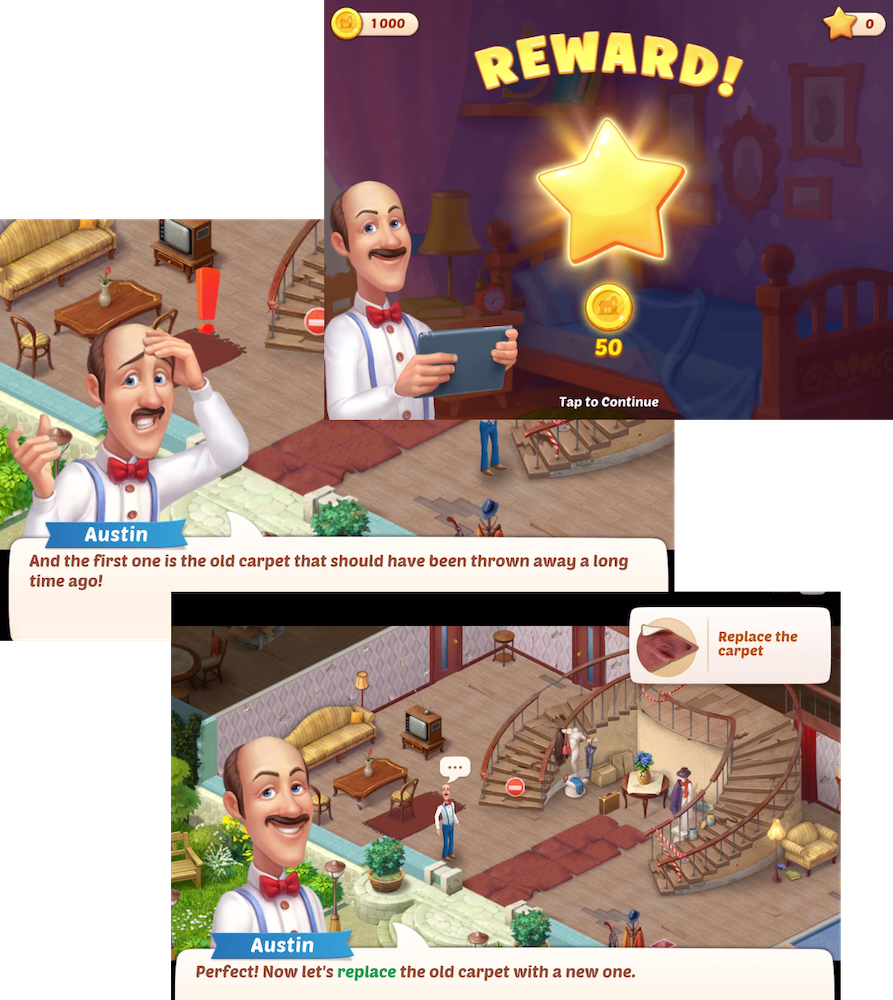
Implementing story elements on a smaller scale also can help bring a sense of purpose to the gaming experience and motivate a new player. The tycoon title Township does not overall incorporate as much storytelling as the Scapes series, but it does have a short opening trailer and a mascot character together with the other townspeople demanding services from their mayor (you) and explaining how to develop your new budding city. These lighter efforts at the tutorial stage already deepen the feeling of purpose and connection with the game’s world and create a feeling of interaction, even if the game doesn’t have an elaborate storyline driving the progression.
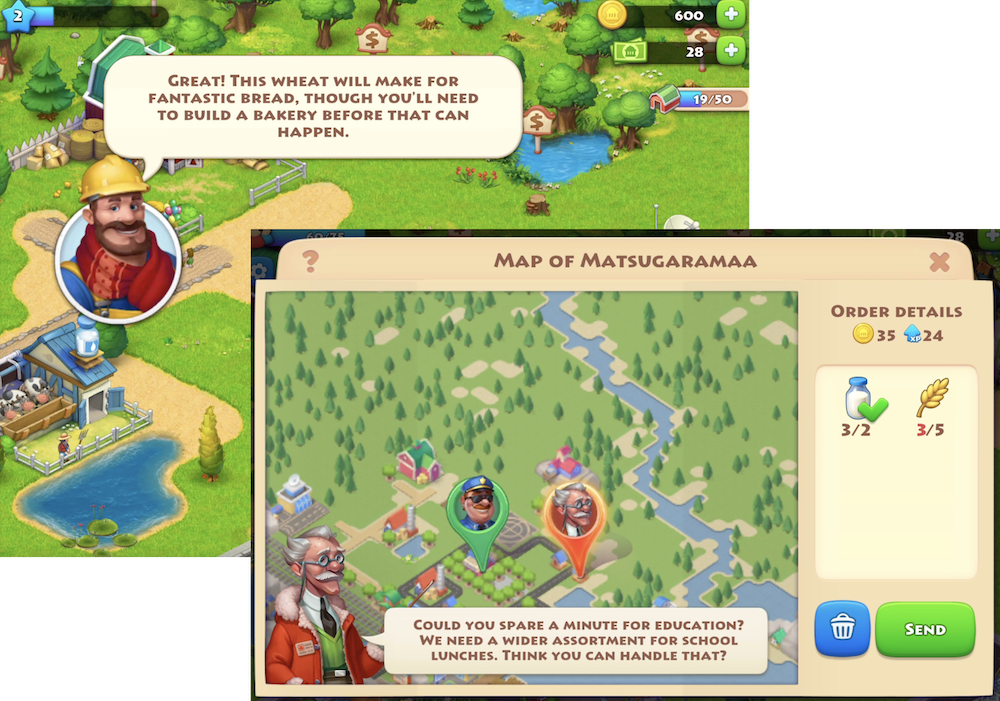
After the setting and background of the game is introduced to the player, it’s time to move on to show what the game is all about. It is hard to find a game that would not have some form of tutorial prepared for its new players. Next, we will take a look at some tutorial designs that have the possibility to elevate the onboarding experience to the next level.
Tutorial – Showing the Ropes & Directing Attention
The tutorial demonstrates to the player how the game mechanics are used and what the everyday core and meta loops look like. In addition to simply teaching how the game is played, the tutorial effectively guides the player’s attention to those aspects of the game that wish to be showcased, be it the satisfaction of grinding your enemies to dust with the most powerful version of the fanciest character in your arsenal, or the monetization mechanics that will smooth the player’s way towards that victory. A good tutorial ensures that the player understands the essential mechanics and features of the game but also manages to raise a hunger for more.
Many games incorporate an automated, interactive tutorial that forces the player to try out the features in a specific order to see how they benefit the progress. This is a simple way of making the player pay attention to the order in which to engage in the core gameplay, take on tasks and upgrade the resources in order to make efficient progress in the early game. The automated tutorial is often built so that after trying out the core gameplay, the player is faced with a problem or a threshold that needs to be overcome, and the tutorial will conveniently show the player exactly what to do to move past the obstacle.
In Dragon Ball Z Dokkan Battle, for example, the tutorial is built around the dialogue and events happening around the characters so that the gameplay action that the player is urged to try out makes sense, has narrative meaning, and is bound to a dynamic drive forward in game progression and story.
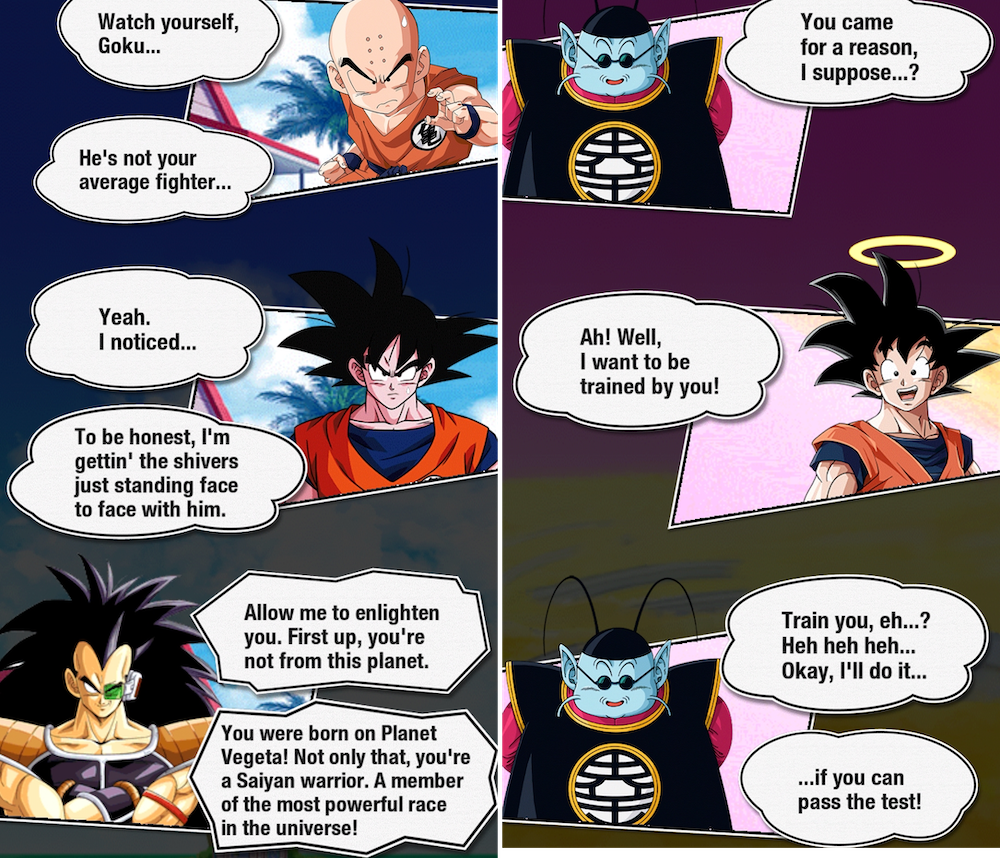
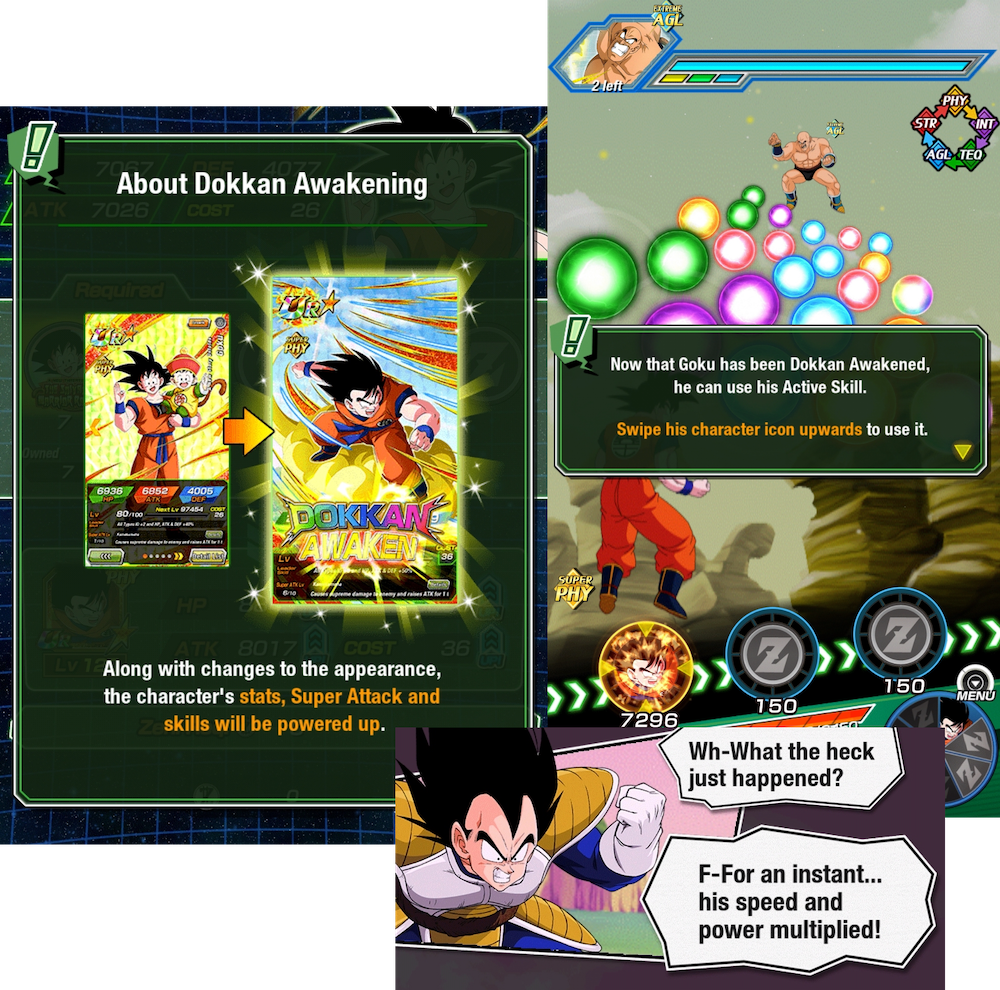
In addition to an automated, forced tutorial, many games offer easy access and static guides with written explanations and illustrations so that the player can later revise how each feature works. The more complex mechanics the game has, the more important this is, but it does not hurt in simpler environments either. Project Sekai Colorful Stage feat. Hatsune Miku, for example, has a neatly compiled, written, and illustrated New Player Manual that shortly explains the main feature cycle. This is an easy way for the new players to refresh their memory of what they were supposed to be doing and where to do it, in case of confusion.
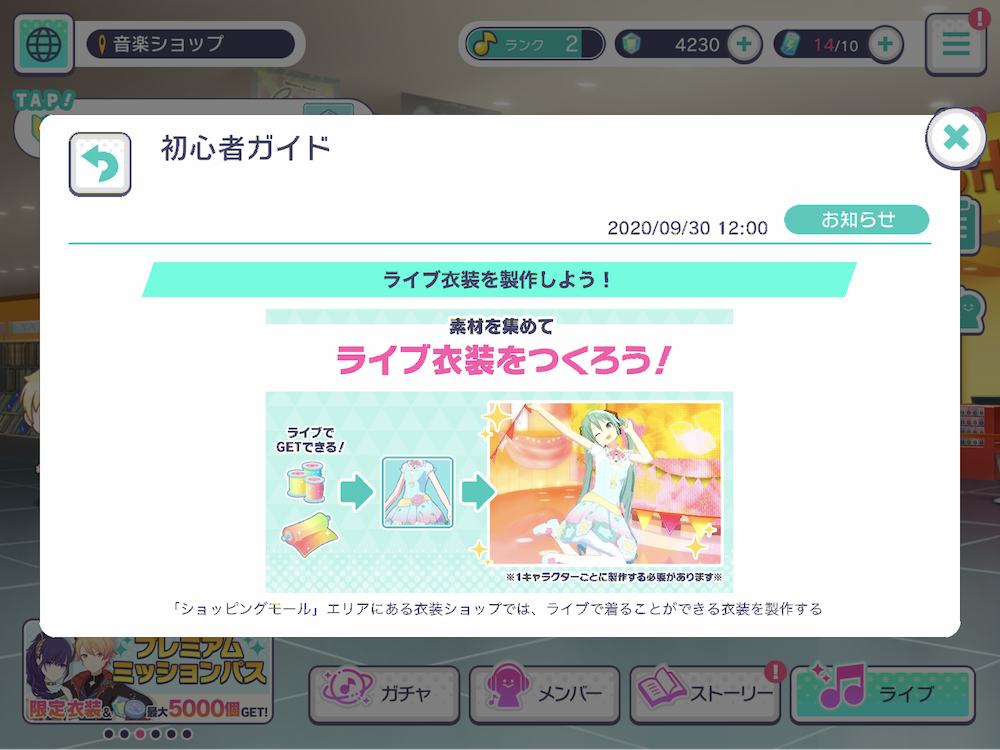
Or, an even lighter version of tutorial elements could be these kinds of looping, simple visual reminders of some convenient mechanics while waiting for a stage to load that Royal Match and Dragon Ball Z Dokkan Battle, among many others, implement.
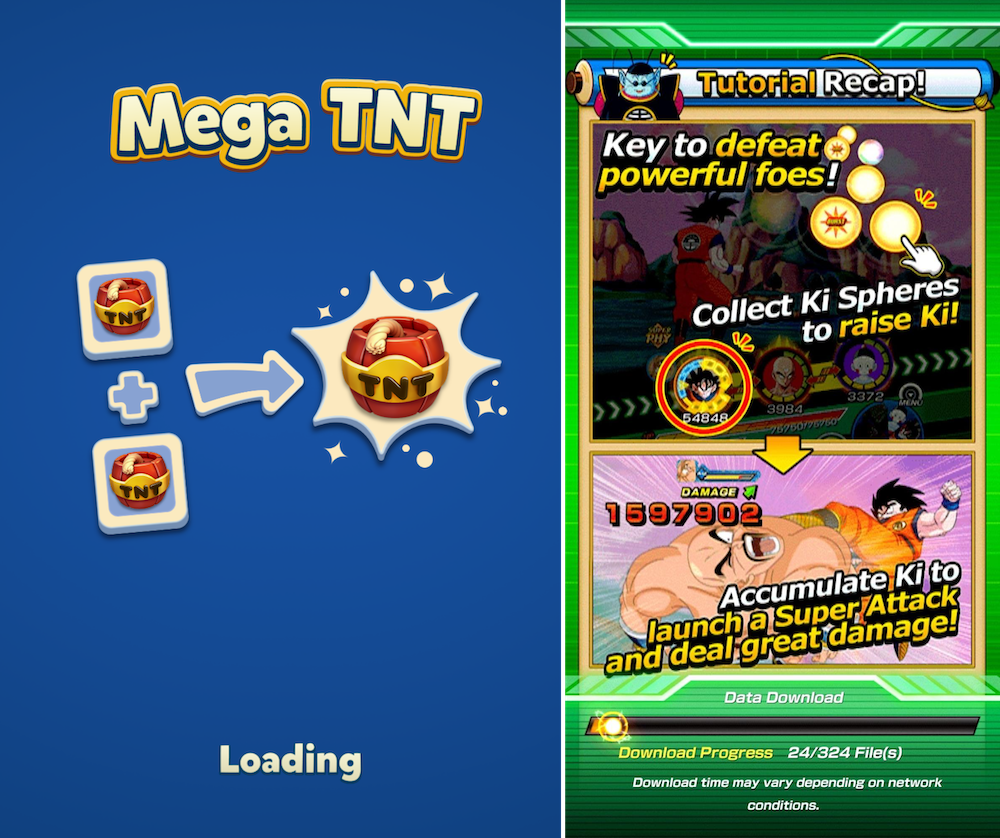
A sense of completion is a powerful motivational driver, and different kinds of task or quest systems are a very popular feature that feeds this driver. It is smart to get the player engaged in the game’s task system by starting with very low-effort tasks and achievements. These low-effort tasks can work effectively as part of the tutorial and reward the player for going through some important basic functions, such as upgrading a character for the first time or saving the game’s progress by connecting it to a social media account.
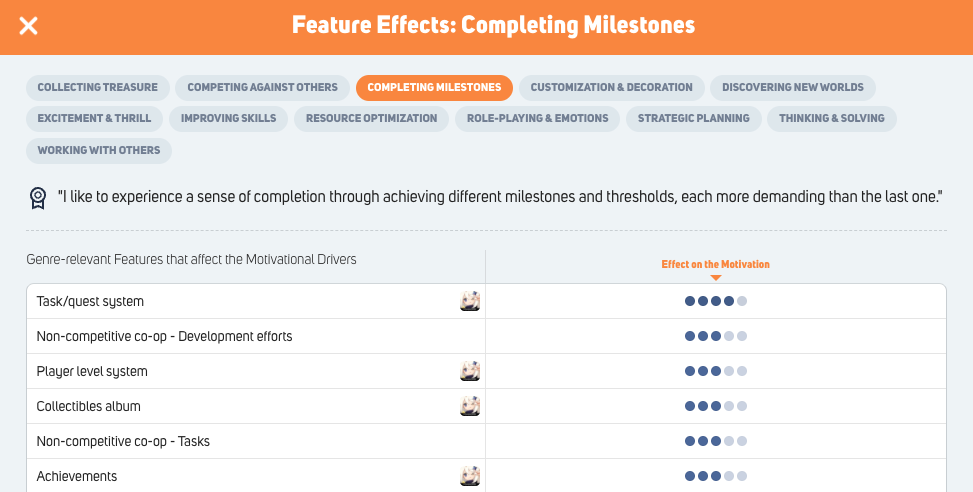
Project Sekai Colorful Stage feat. Hatsune Miku offers simple to complete introductory missions pop up on the side of the main UI screen, marked with a typical symbol for driving school (wakaba māku), catching the player’s attention effectively.
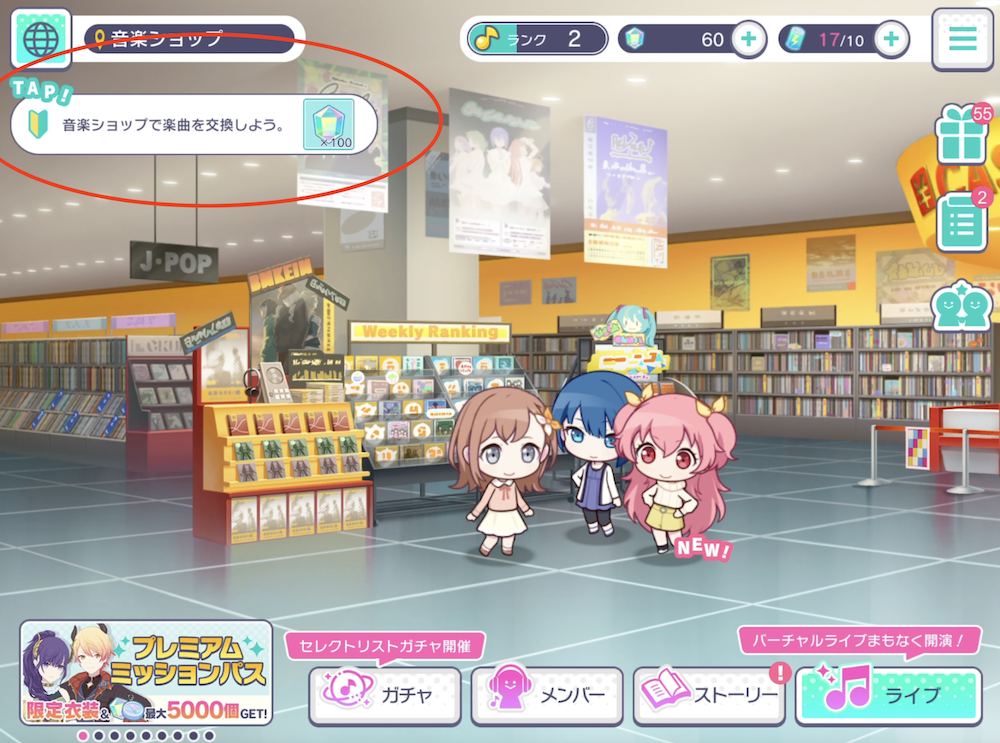
The puzzle RPG giant Dragon Ball Z Dokkan Battle was first released already in 2015 and has managed to accumulate an impressively loyal player base, resulting in the need to keep the late-game players satisfied, but at the same time cater to new players and somehow manage to even out the huge progression gap between the newbies and the veterans. In addition to the thorough tutorial itself, new players are promised to get their hands on an extremely powerful LR (highest rarity rating) character by completing a set of beginner missions. The player is given a taste of the power of these most valuable characters by getting to borrow them from other, advanced players already in the first play levels, while her own characters are of low rarity and level.
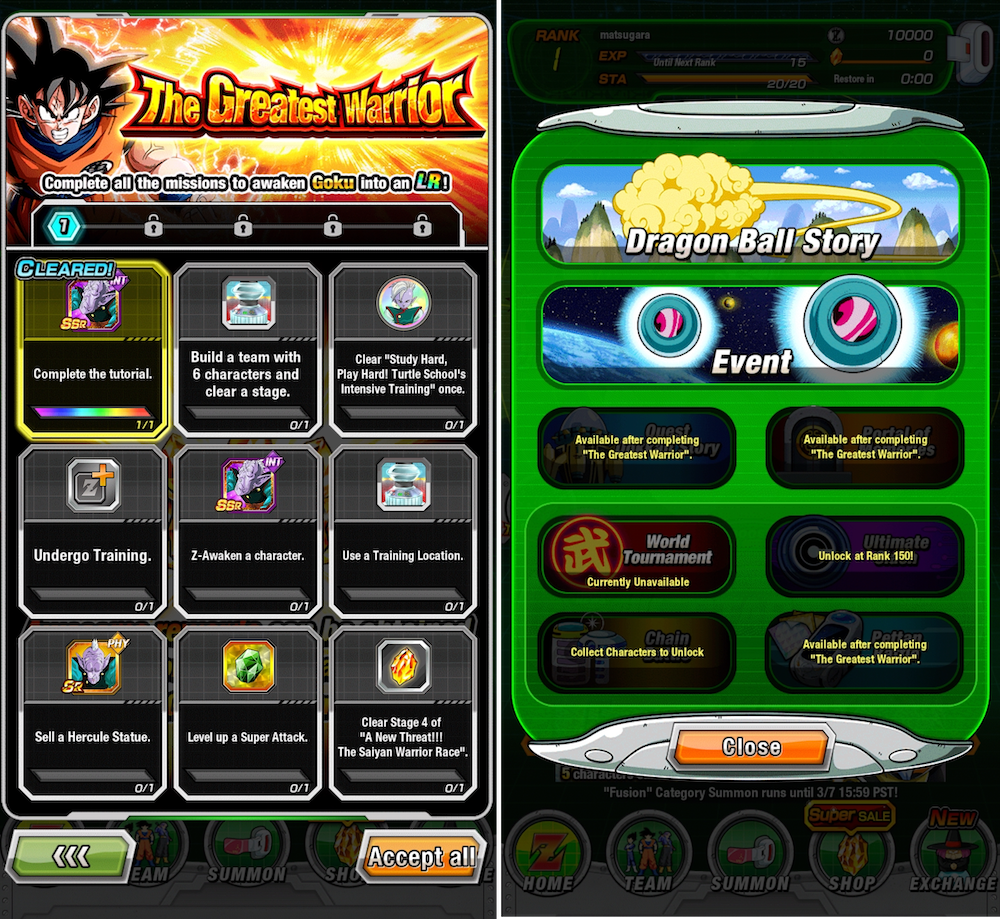
Their tutorial will also take the player to a daily “Intensive Training” level, which yields a hefty amount of player exp, making it possible to jump from player level 1 straight to 27 during the first session, not to mention the boosts to the playable characters available there. These are great ways of getting the player used to the mechanics of battle and upgrading while rewarding in a generous and meaningful way.
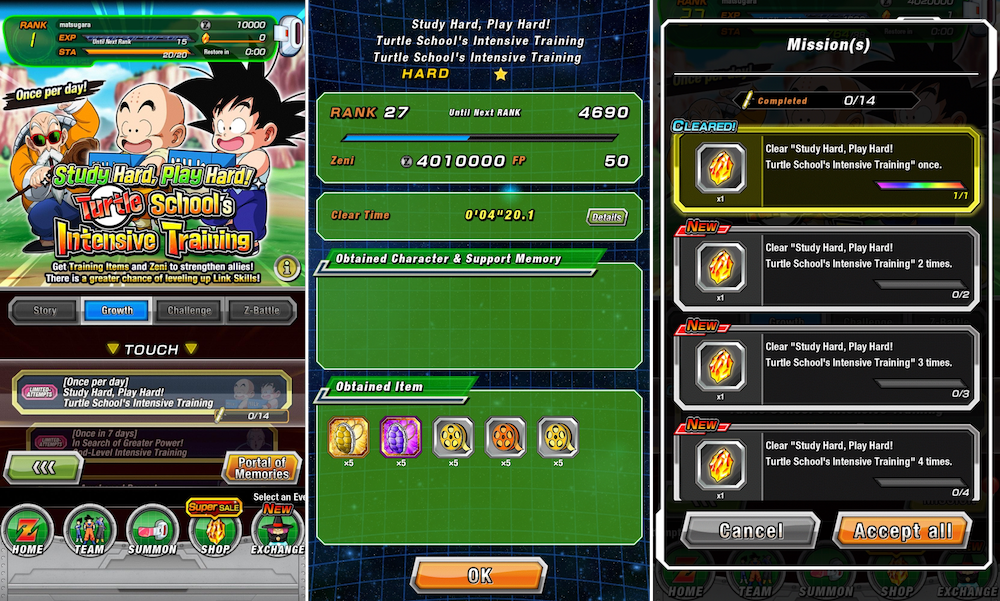
A task system tailored specifically for new players – along with story elements and an engaging tutorial – can definitely be tied to early-stage retention, which we will talk more about in the next post of this series… Stay tuned!
Summary
Successful player onboarding combines several different areas to keep the players returning to the game. In this first article of our blog series introducing onboarding best practices, we have discussed two areas that should be paid attention to: narrative setting and tutorial mechanics, illustrated with some prime examples of how to get creative with these mechanics from top games across different markets and genres.
The first key takeout here is that storytelling elements can be a powerful tool for creating emotional engagement from the get-go in practically all kinds of games. They help players forge a connection with the game, which will compel them to return and continue playing. Secondly, a tutorial is a must in making sure that the player understands how the game mechanics are used. Still, a clever tutorial also effectively guides the player’s attention to the aspects of the game that are wished to be showcased to the players. It doesn’t just help them get a grasp of the game’s features and mechanics but also hints to them of what’s to be gained later on, awakening greed for more, better, stronger…
For a further look into what else can be done in terms of ensuring a great beginner’s experience, be sure not to miss the upcoming parts 2 and 3 of this blog post series on new player retention and monetization!
In the meantime, if you enjoyed reading this post, here are a few more you should definitely check out:


